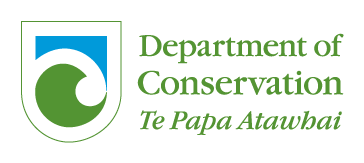
Credit: Unsplash
June 23, 2022
In the week-ended 14 June 2022, border arrivals from Australia totalled 27,700, down 52% on 2019 levels. This volume is up from 25,000 compared with the fortnight prior.
This figure is greater than at any point in QFT 2021, which peaked at 21,800 Australian arrivals (down 61% on 2019) in the middle of May 2021.
Border arrivals from transit hubs Malaysia and Singapore have levelled off in the 5,000-6,000 range per week in the first half of June. This figure translates to a decline of around 20% to 25% on 2019 levels.
Arrivals from the United States have remained down 73% (1,900 arrivals a week) throughout May and June.
In the week-ended 29 May 2022, 16,300 international visitors arrived in New Zealand.
While this figure was up 51% on the same week in 2021, it was down 64% on 2019. This figure is similar to what was seen in the two weeks prior (15,900).
That week, 2,400 visitors (15%) were here for a holiday, and 2,600 (16%) for business. This is up from the same week in 2021 (1,600 for a holiday/vacation, 1,800 for business).
In the week-ended 29 May 2022, visitor arrivals from Australia were down 37% on 2019 levels (from 17,800 to 11,300), but up 14% on 2021 levels.
This 37% decrease in Australian visitor arrivals on 2019 levels is less than the 52% decrease seen in total Australian border arrivals (which includes NZ resident arrivals) over the same period.
In the week-ended 12 June 2022, Australian electronic card transaction (ECT) spend was down 36% on 2019 levels. Two weeks prior, this decline was 23%.
The fall is due mostly to higher than usual spend in the baseline 2019 figures, rather than a significant fall in spend in the current period.
The change in card spend from the UK and USA has settled to a 25% decline on 2019 levels.”
The three major urban centres (Christchurch, Auckland, and Wellington) all saw Australian ECT spend recover to levels similar to the nationwide trend.
In the week-ended 12 June 2022, these cities were down 36%, 41%, and 47% (respectively) on 2019 levels. Nationwide spend was down 36%.
Gisborne and Hastings led the nation in terms of recovery of Australian ECT spend to 2019 levels, up 27% and 8% respectively in the week-ended 12 June.
Other urban centres that are experiencing a faster-than-average recovery are Tauranga (no change) and Hamilton (down 9%).
Even as the borders reopened, the five Tourism Communities (whose economies relied more on international tourism) experienced a decline in Australian spend much greater than the rest of the country.
This gap is now starting to close, with the five Tourism Communities experiencing a 30%-45% decline on 2019 levels in the latest fortnight of data.
Spend in Kaikōura District has continued to increase despite the nationwide fall in spend, reaching a decline of 31% on 2019 levels surpassing the nationwide average decline in the same period.

